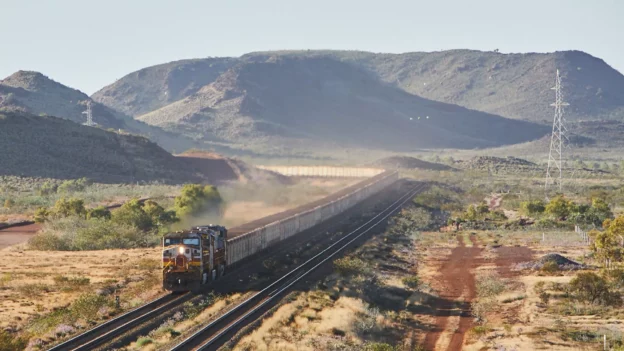The mining company Río Tinto Group reported that one of its autonomous trains, loaded with iron ore, collided with a group of stationary wagons in the Pilbara region, Western Australia. This incident occurred approximately 80 km from the city of Karratha.
Although no injuries were reported (thanks to the fact that there were no people nearby) 22 carriages and 3 locomotives were damaged, according to a Rio Tinto spokesperson cited by the Australian Broadcast Corporation.
Recent incidents in the Pilbara and Dampier
Separately, Australia’s Office of the National Rail Safety Regulator (ONRSR) reported that a recovery train collided with the autonomous train , which had been sent to recover another disabled train. This crash occurred due to a mechanical failure in the recovery train.
Likewise, another accident occurred in February, where an autonomous train unloaded from Rio Tinto derailed at the port of Dampier, a key shipping point for iron ore through Cape Lambert. There were no injuries, but 38 cars of the autonomous train were involved in the accident.
Mining companies such as BHP and Fortescue have also reported derailments at their iron ore operations in recent months. The most notable derailment in the Pilbara region occurred in 2018, when BHP had to intentionally divert a runaway train, which was almost three kilometers long and reached speeds of 110km/h between Newman and Port Hedland.
Automation in mining with Río Tinto Group
Rio Tinto Group , the world’s leading iron ore producer, runs around 14,000 rail cars on its Pilbara rail network, with each rail car capable of transporting approximately 118 tonnes of iron ore.
Despite these challenges, autonomous train technology represents a significant advance in the mining industry . Automation promises to improve operational efficiency and reduce costs in the long term. This company and other mining companies continue to invest in the development and improvement of these technologies, seeking to minimize the risks and maximize the benefits of automation.
Follow us on social networks and don’t miss any of our publications!
Inspenet.com YouTube LinkedIn Facebook Instagram X
Source: mining
Photo: riotinto

